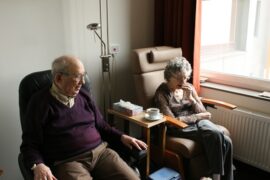The coronavirus outbreak has lead to unprecedented changes across the world. Many of these changes revolve around the medical industry, with increasing fears over hospital capacity. In this regard, various areas of medical software development began to actively develop. Telemedicine is a technological innovation that is helping to fill the gaps in the medical industry during this pandemic.
Telemedicine, or telehealth, is the network of health-related practices and services that operates digitally. Through apps and audio and video calls, telehealth connects doctors and patients without the need to leave the house. This is critical during this era of social distancing and self-isolation. Its services include anything from advice and monitoring to remote administering and checkups.
At-Home Patients
At-home patients can fall into several different categories — those who are showing early symptoms of the coronavirus, those who need treatment unrelated to the virus and those who have the virus but require close monitoring.
Telemedicine eases the transition for doctors and nurses to provide care through apps or smartphones. Patients who show early signs of coronavirus symptoms will require testing, but if they aren’t in need of hospitalization, it’s best for them and those in their circle to stay home. Doctors can provide care with 24/7 monitoring to ensure a patient’s health. The same goes for a diagnosed patient — doctors can see if their condition worsens or improves.
Those with unrelated medical inquires or issues will also be able to use telehealth, since it has become standard for some clinics and health care facilities across the country. For instance, a patient could video conference with a dermatologist for a checkup.
In-Hospital Patients
Many patients who are diagnosed with COVID-19 experience mild or flu-like symptoms. If an individual does require hospitalization, however, telehealth can help there, too. In the last decade, the United States and many other countries have experienced remarkable progress in the digitization of the health experience. Now, from this progress, doctors have the ability to use telemedicine to admit, treat and administer medicine for patients while in the hospital.
If a patient requires hospitalization, telemedicine can help sort those who need beds and immediate care from those who doctors can separate just to reduce the spread. Due to the overwhelming potential of the virus, doctors may need to turn to telemedicine to administer medicine automatically as well. These technological processes will help patients recover, lower the rate of spread and save lives.

Hospital Staff
Similarly, hospital staff members themselves are most likely going to be overwhelmed with the influx of patients and concerned calls. Telemedicine provides technology that can bridge divides and disconnections during this time of anxiety.
Due to health care providers’ prolonged and constant exposure to the virus, they may get infected or come in contact. From there, they will have to either recover in isolation or self-quarantine for 14 days to see if they show symptoms. If they are well enough, they can continue to provide care through telemedicine services. This will be necessary when COVID-19 reaches its apex.
Additionally, hospitals and clinics are already bombarded with calls. Directing people to use telemedicine apps instead of calling can help ease the burden. On these apps, people will find the information they need in order to assess themselves, seek further treatment or become more informed on the matter.
The Uninsured
Health insurance is a hot topic in U.S. politics and society. But during this pandemic, those who are uninsured may receive benefits from telemedicine. The government recently approved the expansion of benefits from Medicare to cover telehealth services.
Additionally, many government officials claim that anyone in the U.S., regardless of insurance, will be able to get tested and receive treatment for COVID-19. However, this area is still murky amidst the chaos of the pandemic.
Telemedicine could become the link between uninsured individuals and treatment. Depending on the facility, resources and regulations, anyone who is uninsured can connect with doctors or caregivers through telehealth services. This will bridge the gap between health care and those without insurance — a desperately needed connection during an outbreak like this and in normal life.

Moving Forward
Moving onwards into the apex of the pandemic, telehealth is only going to become more necessary. It will connect thousands of patients with doctors while preventing further infections. Thus, telehealth is part of flattening the curve. When COVID-19 is finally less of a threat to society, telehealth will continue to progress forward into becoming an integral part of our daily lives.


































